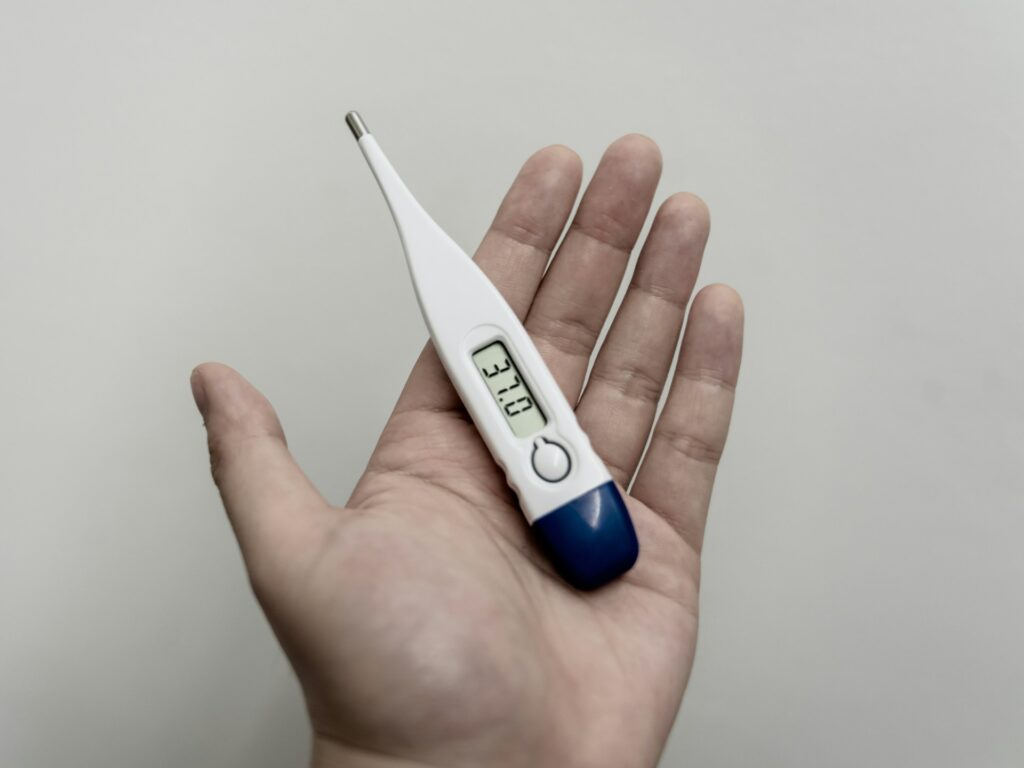Salicylic acid is a molecule of major importance in various industrial sectors, including cosmetics , pharmaceuticals and the food industry. It is recognized for its keratolytic, anti-inflammatory and antibacterial properties , making it a key ingredient in dermatological treatments and pharmaceutical formulations. Its presence in certain plants reinforces its interest in phytotherapy, while its use in the food industry is strictly regulated due to potential toxic effects at high concentrations .
In this article, we will explore the natural origins and industrial synthesis of salicylic acid , its physicochemical and biological properties , as well as its industrial applications and analytical methods to ensure its compliance.
Table of Contents
Definition and properties of salicylic acid
What is salicylic acid?
Salicylic acid, or 2-hydroxybenzoic acid, is an organic compound belonging to the hydroxybenzoic acid family. It is composed of a benzene ring bearing a hydroxyl group (-OH) and a carboxyl group (-COOH) in the ortho position. This chemical structure gives it specific physicochemical properties, which explain its many industrial uses.
Physically, salicylic acid appears as colorless to slightly pink, odorless crystals. Its molar mass is 138.12 g/mol, its melting point is between 158 and 161 °C, and its boiling point is 211 °C under reduced pressure. Although sparingly soluble in water (2 g/L at 20 °C), it dissolves readily in ethanol, ether, and other organic solvents, facilitating its integration into pharmaceutical and cosmetic formulations.
Chemically, salicylic acid is a weak acid (pKa of 2.97), meaning it can release a proton in aqueous solution. This property directly influences its exfoliating and keratolytic activity, used in dermatology. In addition, its hydroxylated structure allows it to interact with other molecules, which is essential in its medicinal, preservative, and pharmaceutical applications.
Salicylic acid is part of salicylate family , a group of compounds derived from this molecule and sharing similar properties, used in various fields ranging from pharmacy to the cosmetic industry.
Natural origin and industrial synthesis
Salicylic acid occurs naturally in several plant species, including white willow ( Salix alba ) and meadowsweet ( Filipendula ulmaria ). These plants use it as a secondary metabolite for defense against pathogens and environmental stresses. Salicylic acid plays a key role in signaling plant defense mechanisms and regulating plant cell growth.
However, due to high industrial demand, salicylic acid is mainly produced by chemical synthesis. The Kolbe-Schmitt process, developed in the 19th century, is the most widely used industrial manufacturing method. It involves reacting sodium phenolate with carbon dioxide under high pressure (100 atm) and a temperature of 125 °C. This reaction results in the formation of sodium salicylate, which is then acidified to produce pure salicylic acid.
Biological properties and toxicity
Salicylic acid is also a major precursor to aspirin (acetylsalicylic acid) . This drug is obtained by acetylation of salicylic acid using acetic anhydride . Aspirin is now one of the most widely consumed drugs in the world, used for its analgesic, antipyretic, and anti-inflammatory properties.
Salicylic acid has numerous biological properties, which explains its use in dermatology, pharmacy, and food preservation. It is particularly known for its keratolytic effect, which helps remove dead skin cells and exfoliate the skin. This makes it an essential active ingredient in the treatment of acne, blackheads, and skin conditions such as psoriasis.
In addition to its keratolytic action , it has antibacterial and antifungal activity that inhibits the proliferation of microorganisms responsible for skin infections. Its anti-inflammatory activity is based on its interaction with the COX-1 and COX-2 enzymes, which reduces the production of prostaglandins involved in inflammation. This property is directly exploited in pharmaceutical formulations, particularly local and systemic anti-inflammatories.
However, salicylic acid can have side effects, especially when used in high concentrations or for long periods. It can be irritating to the skin and mucous membranes , causing redness and burning sensations. If ingested in excess, it can cause a poisoning known as salicylism, which manifests as dizziness, tinnitus, digestive disturbances, hyperventilation, and, in severe cases, metabolic acidosis.
Some studies suggest that salicylic acid may have a reprotoxic effect, although data remain limited. Therefore, its use is regulated in cosmetics and medicines, imposing maximum permitted concentrations and restrictions for certain populations, including pregnant women and young children.

Industrial applications of salicylic acid
Salicylic acid is a molecule with numerous industrial applications, thanks to its exfoliating, anti-inflammatory, antibacterial, and preservative properties. It is particularly used in three main sectors: cosmetics, pharmaceuticals, and the food industry. In each of these areas, strict regulations govern its use to ensure consumer safety and product compliance.
Use in cosmetics
Salicylic acid is a key ingredient in cosmetic formulations , particularly for facial and hair care. It is commonly used for:
- Its exfoliating and keratolytic action : It belongs to the BHA (beta-hydroxy acids) , exfoliating agents capable of penetrating deep into the pores of the skin. Unlike AHA (alpha-hydroxy acids) , which are water-soluble, salicylic acid is fat-soluble , which allows it to dissolve excess sebum and eliminate dead cells trapped in hair follicles.
- Its role in the treatment of acne and blemishes : Thanks to its antibacterial and anti-inflammatory properties , it helps reduce skin lesions and prevent the formation of new comedones.
- Its use in various cosmetic treatments : It is included in anti-dandruff shampoos , anti-wart creams , as well as in certain purifying lotions and tonics .
Use in pharmaceuticals
Salicylic acid plays a central role in the pharmaceutical industry, notably as a precursor to aspirin (acetylsalicylic acid), but also as an active ingredient in many dermatological treatments. Its anti-inflammatory, antiseptic, and keratolytic properties make it a key ingredient in topical and oral medications.
Manufacturing aspirin: an essential derivative
Aspirin, one of the most widely used medications in the world, is obtained by acetylation of salicylic acid with acetic anhydride. This transformation modifies its chemical properties to reduce gastric irritability and improve its absorption in the body. Aspirin is a nonsteroidal anti-inflammatory drug (NSAID) that works by inhibiting the COX-1 and COX-2 enzymes, which are responsible for the production of prostaglandins, molecules involved in inflammation and pain.
Due to its analgesic, antipyretic and anti-inflammatory properties , aspirin is used to treat:
- Mild to moderate pain ( headaches, muscle and joint pain).
- Fever associated with viral or bacterial infections .
- Chronic inflammatory diseases (arthritis, rheumatism).
- Prevention of cardiovascular diseases thanks to its antiplatelet , which reduces the risk of blood clot formation.
Dermatological treatments
Salicylic acid is widely used in dermatological treatments for its keratolytic and antiseptic properties . It is formulated in different forms: creams, ointments, gels and topical solutions.
- Psoriasis and keratinization disorders : It helps eliminate thick patches of skin by promoting cell renewal.
- Treatment of warts and corns : By softening the horny layer, it facilitates their gradual elimination.
- Superficial mycoses : It is sometimes combined with antifungals to enhance their effectiveness.
Side effects and precautions for use
Although salicylic acid is an effective active ingredient, it can cause certain side effects:
- Skin irritation and redness , especially at high concentrations.
- Risk of systemic toxicity when used in large amounts over large areas of skin (especially in children).
- Drug interactions when combined with other NSAIDs or anticoagulants.
Due to these risks, regulations impose concentration limits and precautions for use in pharmacies.
Use in the food industry
Salicylic acid occurs naturally in some plant-based foods, but its use as an additive is banned in most countries due to potential toxic effects when consumed in high doses.
Natural presence in food
Salicylic acid occurs naturally in many fruits, vegetables, and spices , including:
- Berries (strawberries, blackberries, blueberries).
- Citrus fruits (oranges, lemons).
- Spices and aromatic herbs (cinnamon, thyme, oregano).
These foods contain very low, non-toxic amounts of salicylic acid , which pose no health concerns.
Ban on salicylic acid as a food additive
Historically, salicylic acid was used as a preservative in foods due to its antimicrobial and antifungal properties. However, this practice was banned due to health risks associated with excessive ingestion.
- European regulation (EC No. 1333/2008) : Ban on salicylic acid as a food preservative.
- US Standards (FDA) : Salicylic acid is not permitted in food additives.
Laboratory analyses are regularly carried out to ensure the absence of this additive in food products and to detect possible fraud.
Are you looking for an analysis?

Laboratory tests for salicylic acid
As salicylic acid is subject to strict regulations , its laboratory dosage is essential to ensure product safety and compliance .
Why analyze salicylic acid?
Salicylic acid analysis is essential in several contexts:
- Ensure the compliance of cosmetic and pharmaceutical products
- Check that concentrations comply with authorized thresholds.
- Ensure the stability of formulations.
- Prevent any risk of poisoning or adverse effects.
- Detecting the presence of salicylic acid in foodstuffs
- Identify potential fraud (illegal use as a preservative).
- Check that products comply with food regulations.
- Controlling migration from food packaging
- Some packaging materials can release traces of salicylic acid into food.
- Migration testing is performed to ensure that security thresholds are met
Laboratory analysis methods
Different analytical techniques are used to quantify and identify salicylic acid depending on the matrix studied (cosmetics, drugs, food, packaging).
High-performance liquid chromatography (HPLC)
HPLC (High-Performance Liquid Chromatography) is the standard method for analyzing salicylic acid. It allows precise quantification , even at very low concentrations .
Principle :
- The sample is injected into a chromatographic column.
- A solvent carries the compounds through the column.
- Salicylic acid is detected by a UV detector at a specific wavelength (230 nm).
Benefits :
- High precision and sensitivity.
- Analysis of complex matrices.
- Complies with ISO and pharmacopoeia standards.
UV-Vis spectrophotometry
This method is based on the absorption of light by salicylic acid. It is faster and more economical than HPLC, but less specific .
Principle :
- Salicylic acid absorbs UV light at a specific wavelength.
- The intensity of absorption is proportional to the concentration.
Use :
- Routine checks in production.
- Verification of cosmetic formulations.
Migration tests in food packaging
Packaging materials must comply with EC Regulation No. 1935/2004 . Tests are carried out to assess the risk of salicylic acid migrating into food.
Analytical methods used:
- HPLC to detect traces of salicylic acid.
- Mass spectrometry ( GC-MS , LC-MS) for ultra-sensitive analysis.
- Accelerated testing to simulate long-term effects.
These analyses ensure that products and packaging meet health and safety standards .

Salicylic Acid Regulations and Compliance
Salicylic acid, due to its powerful biological properties and potential adverse effects, is strictly regulated by industry-specific regulations. Whether in cosmetics, pharmaceuticals, or the food industry, authorities impose maximum concentrations, usage restrictions, and analytical requirements to ensure consumer safety.
Cosmetic regulations
Salicylic acid is widely used in skin care, particularly for its keratolytic and antibacterial effects. However, excessive exposure can lead to skin irritation and sensitization, hence the need to limit its concentration in cosmetic products.
European standards (EC Regulation No. 1223/2009)
European Cosmetic Regulation (EC) No. 1223/2009 sets specific thresholds for the use of salicylic acid depending on the type of product:
- 2% maximum in leave-in products (creams, lotions, facial serums).
- 3% maximum in anti-dandruff shampoos.
- Banned in products for children under 3 years old , except for shampoos.
These restrictions are intended to prevent skin irritation and limit prolonged exposure to salicylic acid, which could have systemic effects if used excessively.
US regulations (FDA)
In the United States, the Food and Drug Administration (FDA) considers salicylic acid an active ingredient in acne treatments. It is regulated under the OTC (Over-The-Counter) Monographs, which set out the conditions for its use:
- 0.5% to 2% allowed in acne treatments.
- Specific labeling requirement to prevent irritation risks.
These standards ensure that salicylic acid is used safely, without risk to consumers.
Pharmacy regulations
In the pharmaceutical industry, salicylic acid is strictly controlled to ensure its purity and efficacy. It is subject to the requirements of international pharmacopoeias, including the European Pharmacopoeia (Ph. Eur.) and the United States Pharmacopeia (USP).
Purity and concentration standards
Pharmacopoeias impose specific criteria for salicylic acid used in medicines :
- Purity criteria : Maximum level of permitted impurities.
- Precise identification and dosage by HPLC and mass spectrometry .
- Dissolution and stability tests to ensure the effectiveness of formulations.
Salicylic acid used in the manufacture of drugs such as aspirin must be of a purity greater than 99.5%, with rigorous control of contaminants.
Regulations in the food industry
The use of salicylic acid as a food additive is strictly prohibited due to its toxic potential.
European and American standards
- Regulation (EC) No. 1333/2008 : Prohibition as a food preservative.
- FDA Standards : Prohibited for use in food additives.
authorities conduct surveillance analyses to detect the illegal presence of salicylic acid in food products. Any undeclared presence is considered fraud and can lead to severe regulatory penalties .

Analytical innovations in salicylic acid analysis
Advances in analytical technologies are improving the accuracy, speed, and sensitivity of salicylic acid detection methods. Laboratories are developing advanced techniques to meet regulatory requirements and industrial needs.
High-resolution mass spectrometry (HRMS)
High-resolution mass spectrometry (HRMS) coupled with liquid chromatography (LC-HRMS) is one of the most accurate methods for the analysis of salicylic acid.
Principles and advantages
- Allows the detection of minute traces of salicylic acid (in the order of nanograms per liter ).
- Identifies impurities and degradation products .
- Used for quality control in cosmetics, medicines and food packaging .
Thanks to its extreme precision , this technology is used for regulatory and legal analyses in the event of litigation.
Raman spectroscopy and hyperspectral imaging
Non-destructive methods, such as spectroscopy and hyperspectral imaging , offer new possibilities for analyzing salicylic acid without sample preparation.
Applications
- detection in cosmetic creams and lotions .
- Identification of salicylic acid in pharmaceutical tablets and powders .
- Analysis of the homogeneous distribution of salicylic acid in a product.
These methods are particularly appreciated by the pharmaceutical industry , as they allow rapid and reliable control of the quality of formulations.
Development of electrochemical sensors
Electrochemical sensors are a major advance for the rapid detection of salicylic acid, particularly in cosmetic and pharmaceutical products.
Advantages of electrochemical sensors
- Real-time analysis , without expensive laboratory equipment.
- Fast detection , in just a few minutes.
- On-site use for industrial quality control.
Researchers are working on wearable sensors that will allow manufacturers to check the compliance of their products without having to send samples to a laboratory.
Automation and artificial intelligence in analytics
Laboratories are increasingly adopting automated analysis systems, incorporating artificial intelligence (AI) algorithms to improve salicylic acid detection.
Benefits of Automation
- Accelerating sample processing with laboratory robots.
- Reduction of human errors in the interpretation of results.
- Optimization of analytical parameters using AI, which learns from the collected data.
Automation enables the pharmaceutical, cosmetic and food industries to respond more quickly to regulatory requirements and improve their analytical efficiency .
Conclusion
Salicylic acid is a major compound in the cosmetic, pharmaceutical, and food industries, but its use must be strictly controlled to ensure consumer safety. Due to its powerful biological properties and potential side effects, it is subject to strict regulations that impose concentration limits and precise analytical controls.
Analytical methods such as high-performance liquid chromatography (HPLC), mass spectrometry, and Raman spectroscopy play a vital role in ensuring product compliance. Recent innovations, including electrochemical sensors and automated analysis using artificial intelligence, are improving the speed, accuracy, and reliability of results. Advances in analytical technologies are thus providing manufacturers with more effective solutions to meet regulatory requirements and ensure the quality of their formulations.
YesWeLab's services for salicylic acid analysis
YesWeLab supports companies in the cosmetics, pharmaceutical and food by offering them simplified access to laboratory analyses dedicated to salicylic acid . Thanks to its network of ISO 17025 accredited partner laboratories , YesWeLab allows manufacturers to:
- Verify the regulatory compliance of their products by analyzing the concentration of salicylic acid in cosmetic and pharmaceutical formulations.
- Detect the presence of salicylic acid in foodstuffs to ensure their compliance with European and international regulations.
- Conduct migration tests for food packaging to ensure no transfer of salicylic acid to food.
- Access advanced analytical methods (HPLC, LC-MS, Raman spectroscopy, rheological tests) to meet product quality and safety requirements.
Thanks to an intuitive digital platform, YesWeLab facilitates analysis management, from sample submission to results receipt. Manufacturers benefit from a fast, reliable service that meets regulatory requirements, allowing them to optimize their quality control and compliance.
By collaborating with YesWeLab, companies can secure their production processes, avoid regulatory non-compliance and ensure safe products for consumers.




